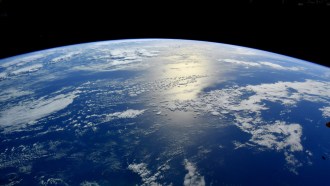
Climate
Zapping sand to create rock could help curb coastal erosion
Low voltages generated minerals that help bind the sand into erosion-resistant rock, offering hope for shorelines ravaged by waves.
By Sid Perkins
Every print subscription comes with full digital access

Low voltages generated minerals that help bind the sand into erosion-resistant rock, offering hope for shorelines ravaged by waves.

The shards contain nine metals that the famous astronomer may have used, including one not formally identified until 180 years after his death.

PFAS, which are found in common products such as cosmetics, food packaging and waterproof gear, have been linked to health problems.

Scientists made the known element 116 with a beam of titanium atoms, a technique that could be used to make the undiscovered element 120.

Hydrogen bonded with sulfur may have given our world its first water after the hydrogen broke away and joined with oxygen in the planet’s crust.

DNA is capable of encoding all sorts of data. Storing it in an amberlike material may keep that information safe for nearly forever.

An analysis of samples from three Florida landfills shows that landfill gas can carry more PFAS than the liquid that leaches from the waste.

In her new book, Arielle Johnson, former resident scientist at the restaurant Noma, explains how to think like a scientist in the kitchen.

Lab-grown diamonds can form at atmospheric pressure in a liquid of gallium, iron, nickel and silicon.

Computer calculations and lab experiments have revealed a possible mechanism for the creation of glyceric acid, which has been seen in meteorites.
Subscribers, enter your e-mail address for full access to the Science News archives and digital editions.
Not a subscriber?
Become one now.